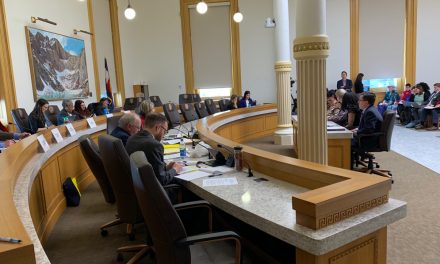In August 2018, Dr. Lisa Littman published a research paper in the peer-reviewed, online journal PLOS ONE. The paper, originally titled “Rapid-onset gender dysphoria in adolescents and young adults: A study of parental reports,” was a qualitative survey of 256 parents whose adolescent and young adult children identified as transgender.
Littman coined the term “Rapid-onset gender dysphoria” (ROGD) to describe a phenomenon she was seeing, “whereby teens and young adults who did not exhibit childhood signs of gender issues appeared to suddenly identify as transgender.”
The study was greeted by outrage and protest from transgender-activists and their allies. As a result, PLOS ONE decided to give her work another review, and Brown University, where Littman works as an Assistant Professor, retracted a press release announcing its publication.
After being re-evaluated by PLOS ONE, her report has been republished – with a slightly different title but very few changes from the original: “Parent reports of adolescents and young adults perceived to show signs of a rapid onset of gender dysphoria.” This new release of the report has received little media attention, but Littman’s study is an important first look at teens and young adults confused about being male or female. Here are three things you should know about this study and the controversy surrounding it.
- The number of children, adolescents and young adults who struggle with confusion about being male or female has increased tremendously.
Boston Children’s Hospital opened the first U.S. treatment center for gender confused youth in 2007. By 2015, there were 40 such clinics across the country. There’s also been a four-fold increase in transgender surgery from 2000 to 2014.
In Britain, similar growth has occurred, as the number of youth referred for “gender treatment” grew from 97 in 2009-10 to 2,519 in 2017-18. The number of girls referred for such treatment increased from 40 to 1,806 during that time period. This was such a large rise, in less than a decade, that the U.K.’s Equalities Minister called for an investigation.
Surveys also indicate a large increase in youth who identify as transgender. A 2016 report in Pediatrics showed that 2.7% of teens in the 2016 Minnesota Student Survey identify as “transgender and gender nonconforming.” According to the Diagnostic and Statistical Manual of Mental Disorders, the prevalence of gender dysphoria in the adult population ranges from 0.005% to 0.014% for men and from 0.002% to 0.003% for women. For almost three percent of teens to identify as “gender nonconforming” is a huge increase from that tiny percentage.
Littman began noticing this increase in young people identifying as transgender, especially among girls. She says, “Late-onset had only been observed in natal males [those born male] until quite recently. About seven years ago, the phenomenon of natal females [those born female] exhibiting late-onset gender dysphoria first started to become visible.” As she notes in her report, until 2012 the incidence of adolescent girls suddenly identifying as transgender was virtually non-existent in psychological literature.
- In Littman’s study, parents reported a number of possible contributing factors to their children’s gender confusion.
Littman explains, in an interview with Quillette, that she became interested in researching teens with gender dysphoria “when I observed, in my own community, an unusual pattern whereby teens from the same friend group began announcing transgender identities on social media, one after the other, on a scale that greatly exceeded expected numbers.” Her study found that peer and social media influence seemed to be influencing factors for many of the young people: 21.5% were part of peer groups where others were identifying as transgender; 19.9% had increased their use of social media and the internet; and 45.3% had experienced both of these influences.
Parents reported that online advice to their children included “how to tell if they were transgender”; “the reasons they should transition right away”; “what to say and what not to say to a doctor or therapist in order to convince them to provide hormones”; and “they should use the ‘suicide narrative’ (telling the parents that there is a high rate of suicide in transgender teens) to convince them [the parents].”
High percentages of the young people also struggled with a wide variety of mental disorders and neurodevelopmental disabilities before coming out as transgender. Sixty-three percent had one or more diagnoses, including: anxiety, depression, attention deficit hyperactivity disorder (ADHD), obsessive compulsive disorder (OCD), autism spectrum disorder (ASD), eating disorder, bipolar disorder and psychosis. Parents reported frustration with clinicians who evaluated their child for gender dysphoria and did not explore these mental health issues or even ask for medical records.
In addition, 48.4% of parents reported that their adolescent or young adult had experienced a trauma – such as their parents’ divorce, the death of a parent, sexual harassment, rape, bullying, an abusive dating relationship, a serious illness or psychiatric hospitalization – before the onset of gender confusion. Again, many parents expressed concern that when evaluated by a clinician for gender dysphoria, these issues were not discussed.
Littman hypothesizes that transgenderism may be a “maladaptive coping mechanism,” a “response to a stressor that might relieve the symptoms temporarily but does not address the cause of the problem and may cause additional negative outcomes.” For young people who use hormones and surgery to try to live as the opposite sex, those negative outcomes can be devastating. After having double mastectomies and taking male hormones, some young women have gone back to living as women – but the effects of hormones and surgery remain.
- Dr. Littman is not the only medical professional or researcher to have her work attacked and maligned by transgender activists and their allies.
Littman said she did not expect the opposition she received for publishing her study, “I was completely floored by the magnitude and the contentiousness of the debate. And I did not expect the pushback to cross the boundary from social media into academic and scientific institutions.” She says that she lost a consulting job, unrelated to her ROGD research, “Some members within the organization expressed concerns that the paper did not support the gender-affirming perspective.”
Those who don’t support the “gender-affirming perspective” often face the wrath of transgender activists. Dr. Kenneth Zucker, for example, was the head of the Child Youth and Family Gender Identity Clinic in Toronto for more than 30 years. The leading expert on gender confused children, he generally supported a “watch and wait” approach to treating them, rather than immediately letting them live as the opposite sex. Zucker was ousted from his position when activists accused him of practicing “conversion therapy” and falsely alleged he’d mocked clients. Three years later, the clinic apologized and gave him a settlement of almost $600,000 in damages and legal fees.
In England, psychotherapist James Caspian, who identifies as gay and says he’s helped “hundreds of people while they were transitioning,” had likewise seen the upsurge in young women identifying as transgender. He also saw stories of individuals unhappy with their “transition” who went back to living as their biological sex. His proposal to study this “transgender desistance” was approved, and then rescinded, by Bath Spa University. According to Caspian, “The fundamental reason given was that it might cause criticism of the research on social media, and criticism of the research would be criticism of the university. They also added it’s better not to offend people.”
More recently, the Alliance Defending Freedom filed a lawsuit against the University of Louisville on behalf or Dr. Allan M. Josephson. Josephson was hired in 2003 to head the school’s Division of Child and Adolescent Psychiatry and Psychology. In 2017, he spoke at a Heritage Foundation panel where he explained his views about treating gender-confused children. He emphasized that parents and therapy should work toward helping a child align with his or her biological sex. The suit alleges that for espousing these views, Josephson was demoted and then his contract was not renewed.
Standing for Truth about Sexual Identity Confusion
The current treatment protocol for young people confused about being male or female is called “gender-affirmative care” or simply “affirmative care.” Created largely by gender ideologues and their allies, it basically says that doctors and therapists should believe every child who says “I’m really the opposite sex” – without question – and help the child live as the opposite sex. This standard of treatment includes prescribing body- and mind-altering puberty blockers and opposite-sex hormones, followed by surgeries.
Dr. Michelle Cretella, director of the American College of Pediatricians, is an outspoken critic of this treatment. She writes that puberty blockers have not been proven safe for gender-confused children and opposite-sex hormones are associated with dangerous health risks. In her words, “Today’s institutions that promote transition affirmation are pushing children to impersonate the opposite sex, sending many of them down the path of puberty blockers, sterilization, the removal of healthy body parts, and untold psychological damage.”
Thankfully, some medical professionals, such as Dr. Littman and others described above, have not bought into the “born in the wrong body” ideology and refuse to be cowed by transgender activists and their allies. This openness to inquiry about the influencing factors that lead to gender dysphoria could help young people find real healing and embrace their biological bodies.
For more on this topic:






